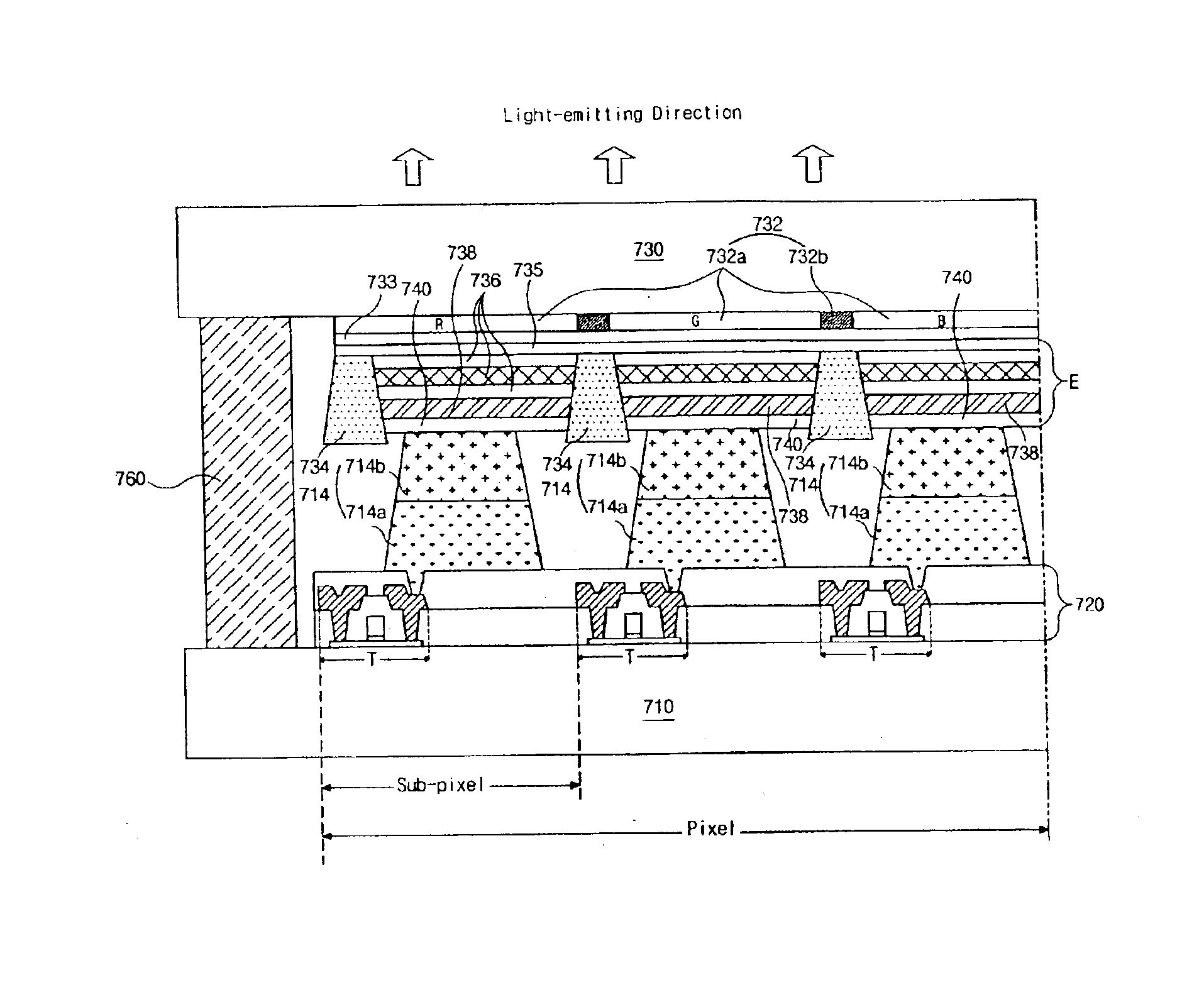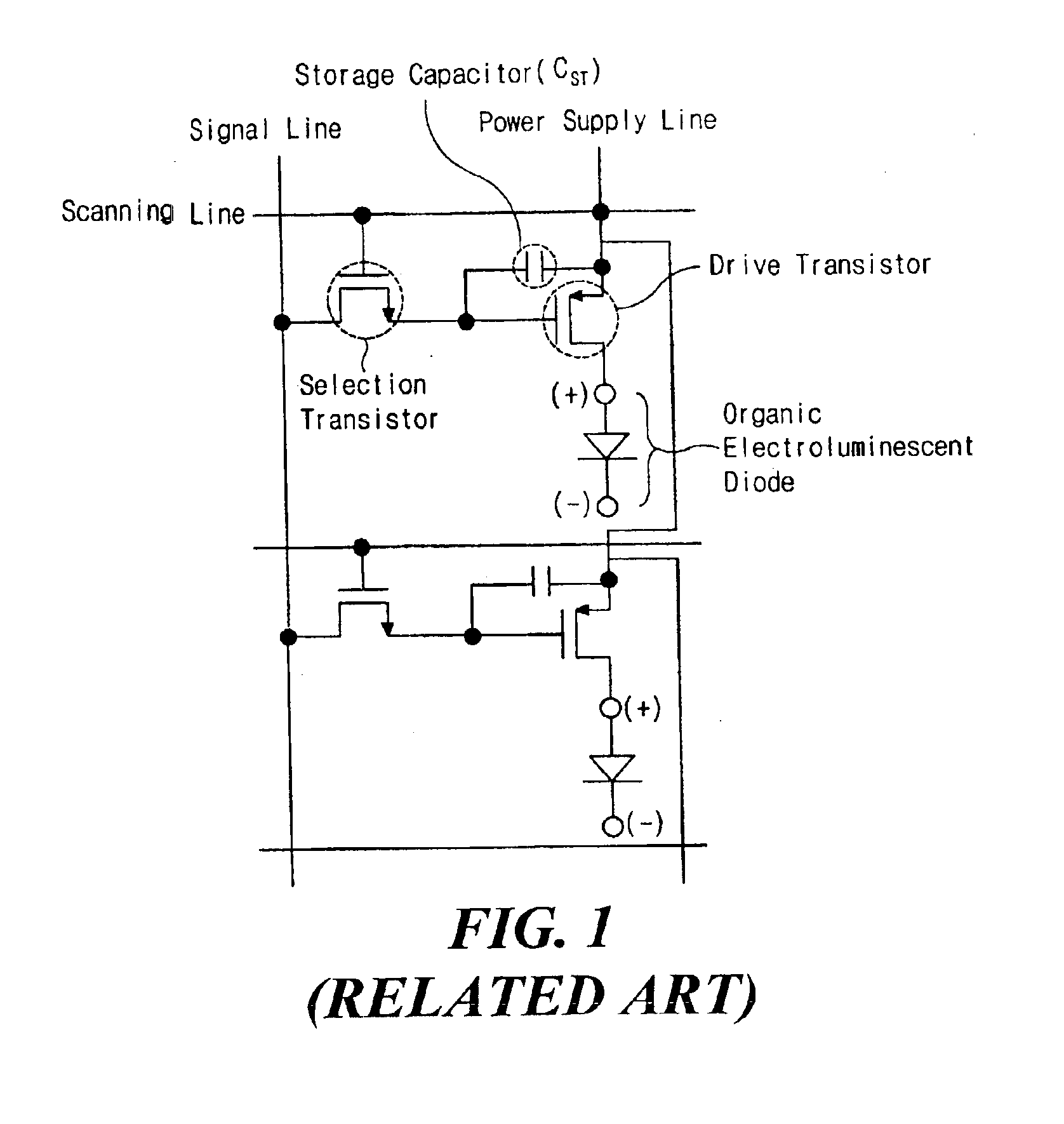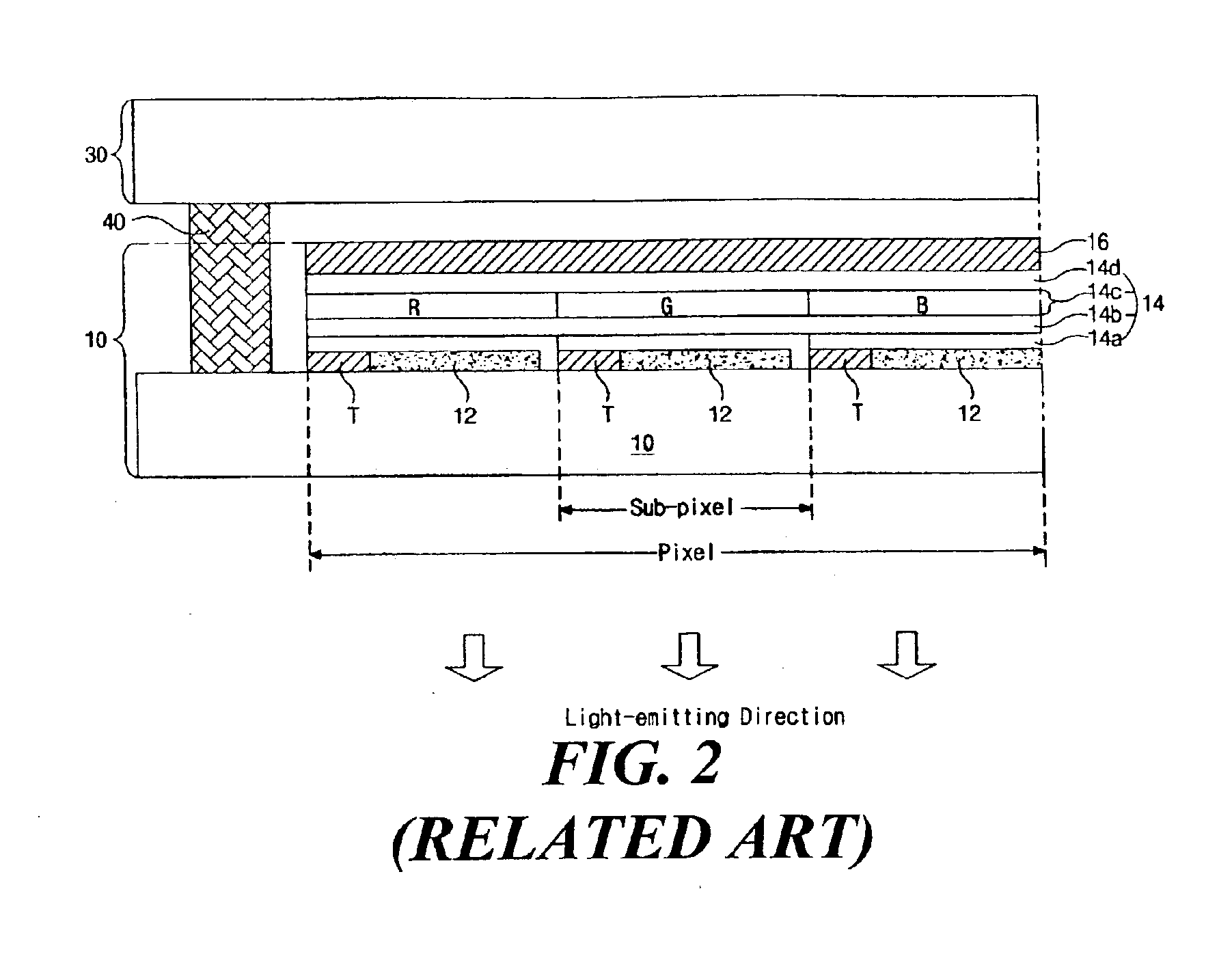Organic electroluminescent display device
a display device and organic technology, applied in the direction of thermoelectric devices, identification means, instruments, etc., can solve the problems of poor contrast ratio, narrow viewing angle, lcd device, etc., and achieve the effect of improving fabrication yield, high aperture ratio, and improving resolution
- Summary
- Abstract
- Description
- Claims
- Application Information
AI Technical Summary
Benefits of technology
Problems solved by technology
Method used
Image
Examples
first embodiment
FIG. 5 is a cross-sectional view of a top emission type organic electroluminescent display device showing one pixel according to the present invention. As shown in FIG. 5, first and second substrates 110 and 130 are spaced apart from each other. The first and second substrates 110 and 130 are attached to each other by a seal pattern 140. On a front surface of the first substrate 110, array elements 120 are formed. On a rear surface of the second substrate 130, organic electroluminescent diodes E are disposed. Each of the organic electroluminescent diodes E includes a first electrode 132, electrode separator 134, an organic electroluminescent layer 136 and a second electrode 138. The first electrode 132 is disposed on the whole surface of the second substrate 130 and acts as a common electrode. The electrode separators 134 are formed of an insulating material. Electrode separators 134 are disposed inboard of a pixel such that the electrode separators 134 divide a pixel into three sub...
fourth embodiment
FIG. 10 is an enlarged cross-sectional view illustrating a thin film transistor and conductive connector according to the present invention. As shown, a semiconductor layer 350 of polycrystalline silicon and a capacitor electrode 352 are formed on the first substrate 310. On the central part of the semiconductor layer 350, a gate insulation layer 354 and the gate electrode 356 are sequentially formed. An interlayer insulator 358 is formed on the first substrate 310 to cover the semiconductor layer 350, the capacitor electrode 352 and the gate electrode 356. The interlayer insulator 358 has first and second contact holes 360 and 362 that expose portions of the semiconductor layer 350, respectively, on both sides of the gate electrode 356. Source and drain electrodes 364 and 366 are formed on the interlayer insulator 358, and contact the semiconductor layer 350 through the first contact hole 360 and through the second contact hole 362, respectively. A power electrode 368 is formed on ...
fifth embodiment
In the present invention, a buffer electrode 440 is formed on the rear surface of each of the organic electroluminescent diodes E. Thus, a plurality of conductive connectors 414 is disposed between the array elements 420 of the first substrate 410 and the buffer electrode 440. More specifically, each of the organic electroluminescent diodes E further includes a buffer electrode 440 on the rear surface of the second electrode 438. Since the buffer electrode 440 is formed of a conductive material, the conductive connectors 414 electrically connect the thin film transistors T to the organic electroluminescent diode E.
The first and second electrodes 432 and 438 of the organic electroluminescent diode E are generally formed in an evaporator. However, the metal thin films of the first and second electrodes 432 and 438, which are formed in an evaporator, are easily damaged and separate easily from the organic electroluminescent diode E. The buffer electrode 440 formed on the second electro...
PUM
 Login to View More
Login to View More Abstract
Description
Claims
Application Information
 Login to View More
Login to View More - R&D
- Intellectual Property
- Life Sciences
- Materials
- Tech Scout
- Unparalleled Data Quality
- Higher Quality Content
- 60% Fewer Hallucinations
Browse by: Latest US Patents, China's latest patents, Technical Efficacy Thesaurus, Application Domain, Technology Topic, Popular Technical Reports.
© 2025 PatSnap. All rights reserved.Legal|Privacy policy|Modern Slavery Act Transparency Statement|Sitemap|About US| Contact US: help@patsnap.com



